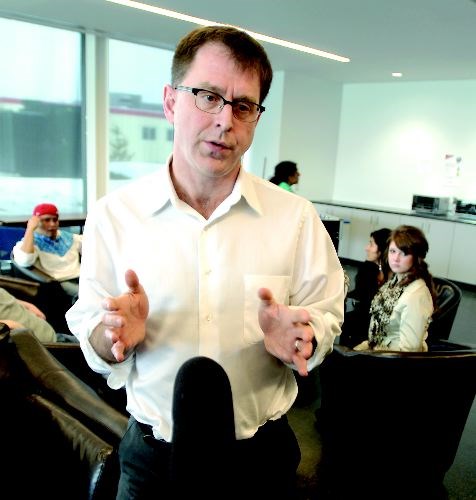B.C. NDP leader Adrian Dix was in Prince George on Wednesday to call on the provincial government to support trades training initiatives in the North, like the proposed trade school at the former Rustad sawmill.
In addition to the proposed trades school, three college in the North have proposals to increase trades training, Dix said.
"I've very excited about what's proposed at Rustad. There are excellent proposals in place ... that government should take up," Dix said. "Yes, some of these projects cost money. [But] they are the right investments to make. The problem is they've cut the budget [for trades training]."
While funding for universities and colleges through the Ministry of Advanced Education is projected to increase from almost $1.86 billion in 2011-12 to nearly $1.87 billion in 2012-13, revenue for the Industry Training Authority is projected to decline each year until 2014-15.
The Industry Training Authority is an arms-length government agency which funds trades and technical training across B.C. Provincial funding for the ITA peaked in 2010-11 at $111.6 million, before dropping to $103.3 million in 2011-12.
At the same time, federal funding for the agency dropped from $634,000 to $64,000. The province is expected to boost its contribution to the ITA in 2012-13 to $106.1 million, before reducing it again in 2013-14 and 2014-15.
"Everybody I have met with in the forestry industry, in the mining industry ... is saying we have a significant skills shortage now. It's the one area their own jobs plan says it needs most," Dix said. "It's harder and harder for young people to get access to post-secondary education."
For residents of the North to take advantage of the jobs created by major resource projects, they need to have access the skills training needed, he said. The sooner investments are made in additional trades training, the sooner those students will be available to fill the estimated shortage of 61,000 skilled workers, he added.
Jobs, Tourism and Innovation Minister Pat Bell said his government continues to place significant emphasis on trades training.
"The number of trades training seats ... is about double what it was in the 1990s," Bell said. "Right now we have 34,000 to 36,000 people registered in trades [programs.]"
While significant progress has been made, there is still more that can be done to ensure access to trades training, Bell said. The proposed trade school at the former Rustad mill is one the radar of his ministry, the ITA and Ministry of Advanced Education.
"The ITA board chair and I have had a recent meeting on this," Bell said. "We are looking at the facility in the BCR site."



